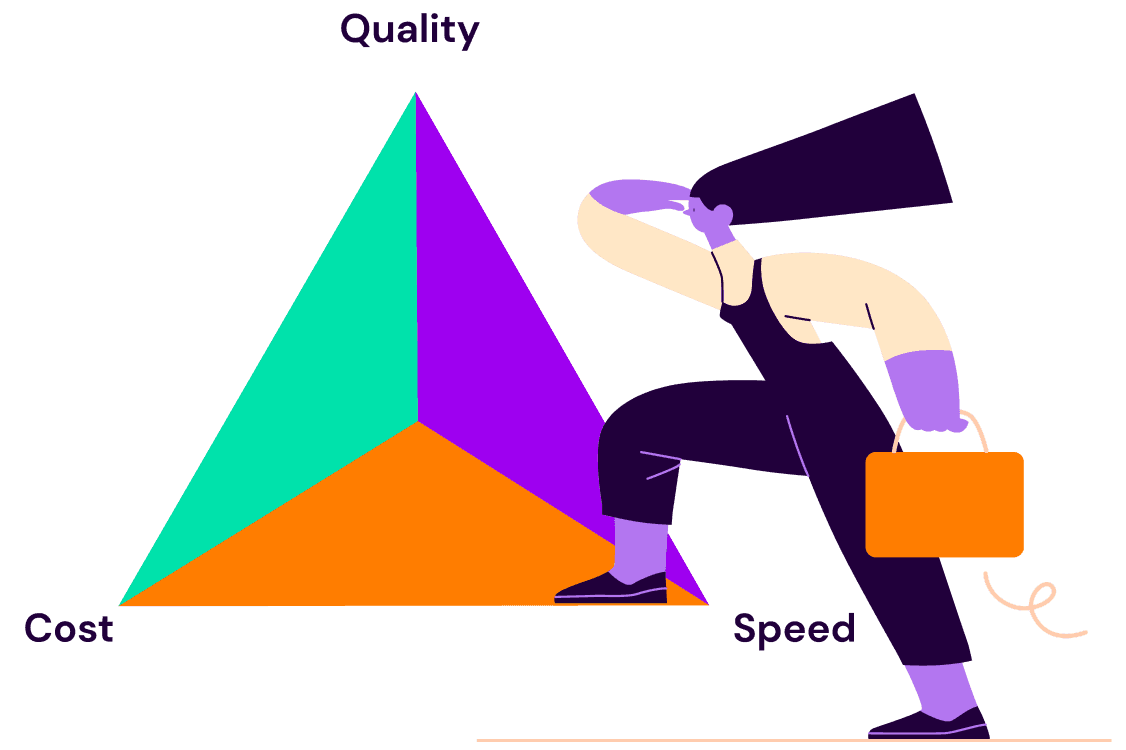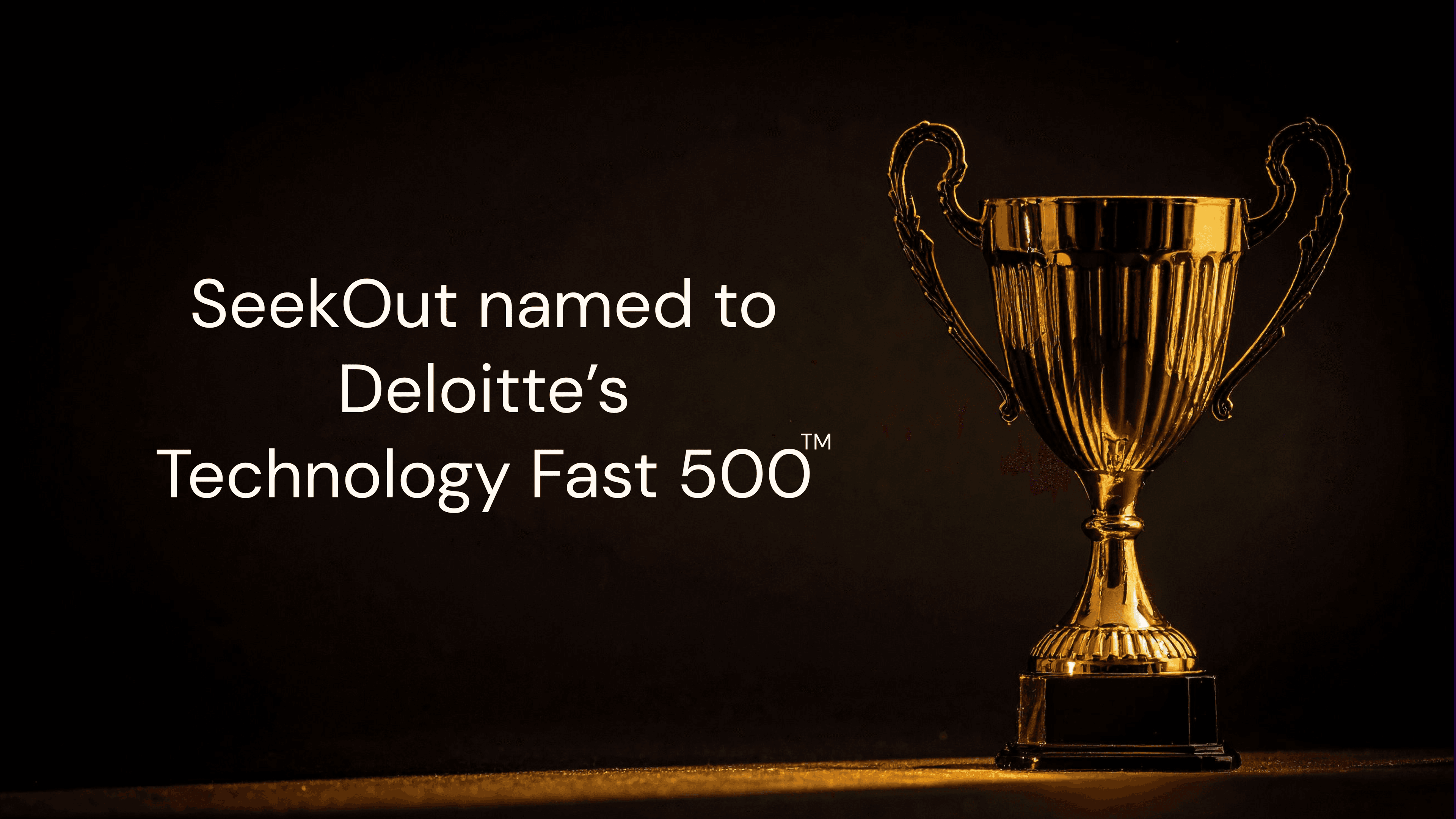
Back to blogs
If you thought the “skills-based organization” had its fifteen minutes of fame, think again! The conversation around skills isn’t new, but it’s evolving as organizations are empowered by new AI-enabled technologies.
However, while many leaders have invested in skills-centric solutions for addressing hiring and talent development challenges, few have seen the transformative effects that these approaches promise. Why is that?
In our new Future of Skills whitepaper and accompanying infographic, we explore why many investments have stalled, and offer paths you can take to effectively solve talent problems with skills today.
Download the full infographic or read on for the highlights.
Why—and how—are organizations trying to be skills-based?
There's no universally accepted definition or model for a skills-based organization. But in theory, it means that a company prioritizes the skills, capabilities, and learning potential that candidates and employees bring to the table, rather than limiting the assessment of a person’s qualifications to pedigree, like degrees and job titles.
This is particularly appealing for the promises of business agility and more diverse, adaptable, and innovative teams.
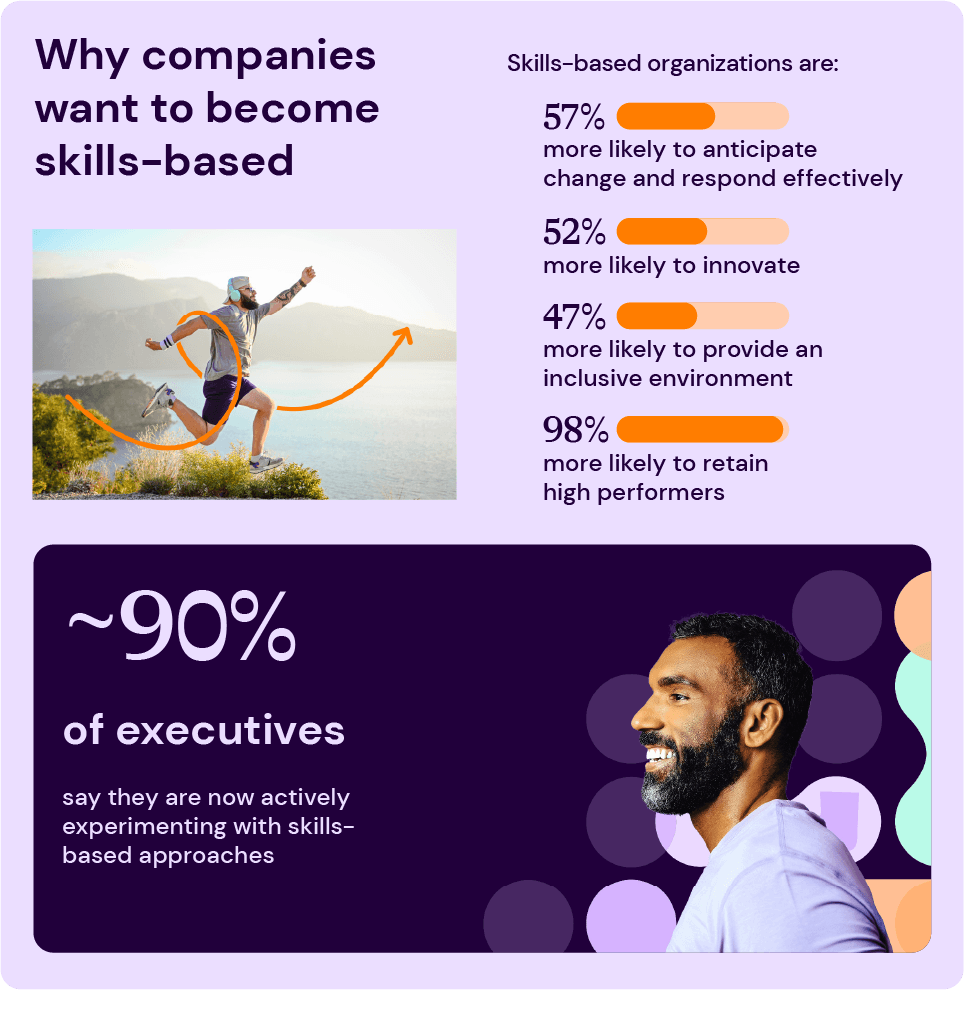
According to Deloitte, skills-based organizations are:
57% more likely to anticipate change and respond effectively and efficiently
52% more likely to innovate
47% more likely to provide an inclusive environment
98% more likely to retain high performers
Plus, around 90% of executives have reported that their organization is at least experimenting with a skills-based approach as part of their talent strategy. For many, this process begins by trying to understand the skills their organization has and needs. To do that, many have invested in a skills taxonomy—a structured dataset to represent the skills of their employees.
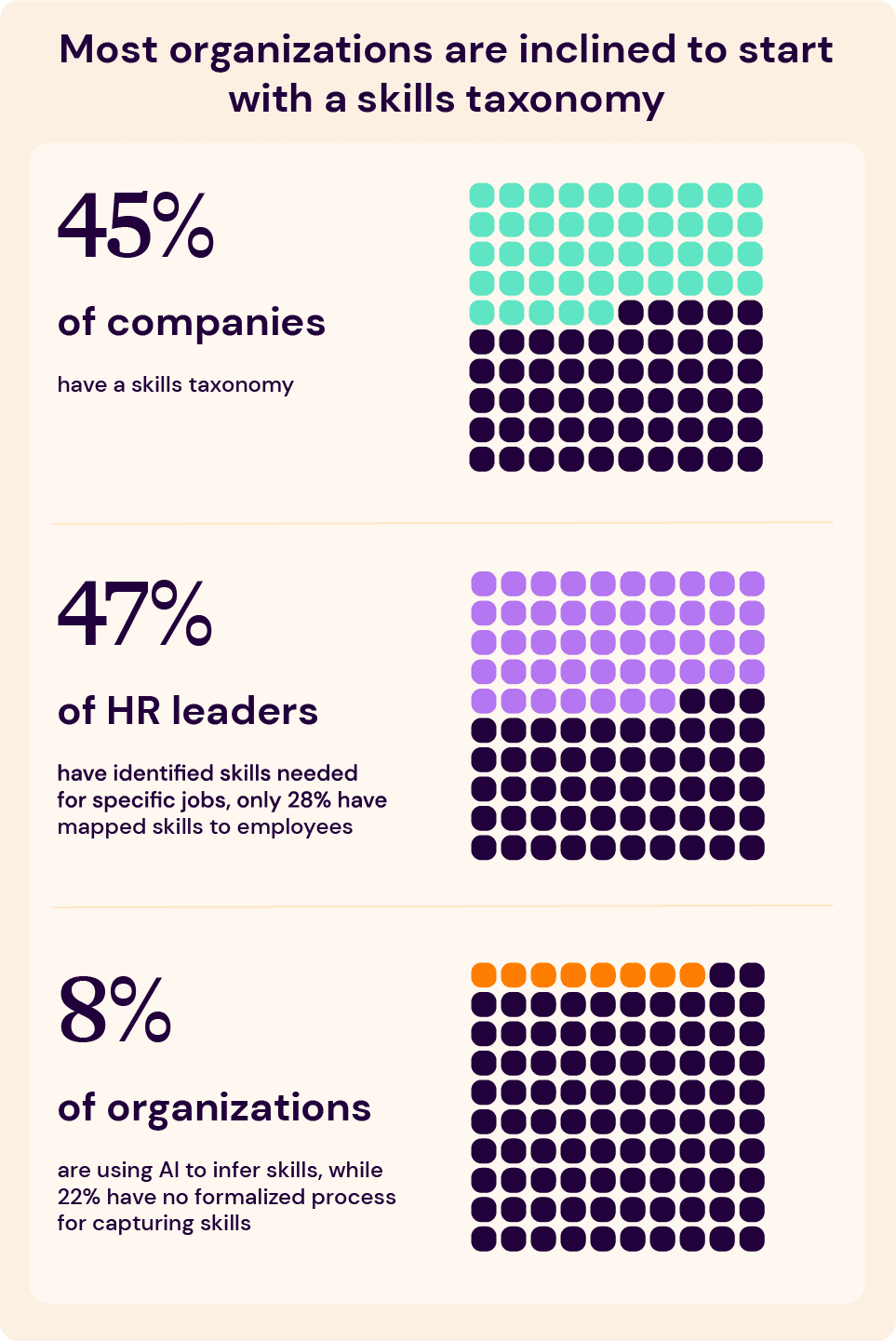
Source: Mercer
A skills taxonomy can offer HR, managers, and employees some structure and consistency when communicating about individual and collective competencies.
However, whether companies decide to build a taxonomy or purchase one from a vendor, there are immense challenges from deployment and skills verification to ongoing maintenance.
Off-the-shelf skills taxonomies don’t have enough coverage or granularity of skills that your company has, making this a substantial investment whether you decide to build or buy. Plus, you face an ongoing process to keep it accurate and relevant as your business and employees' skills evolve.
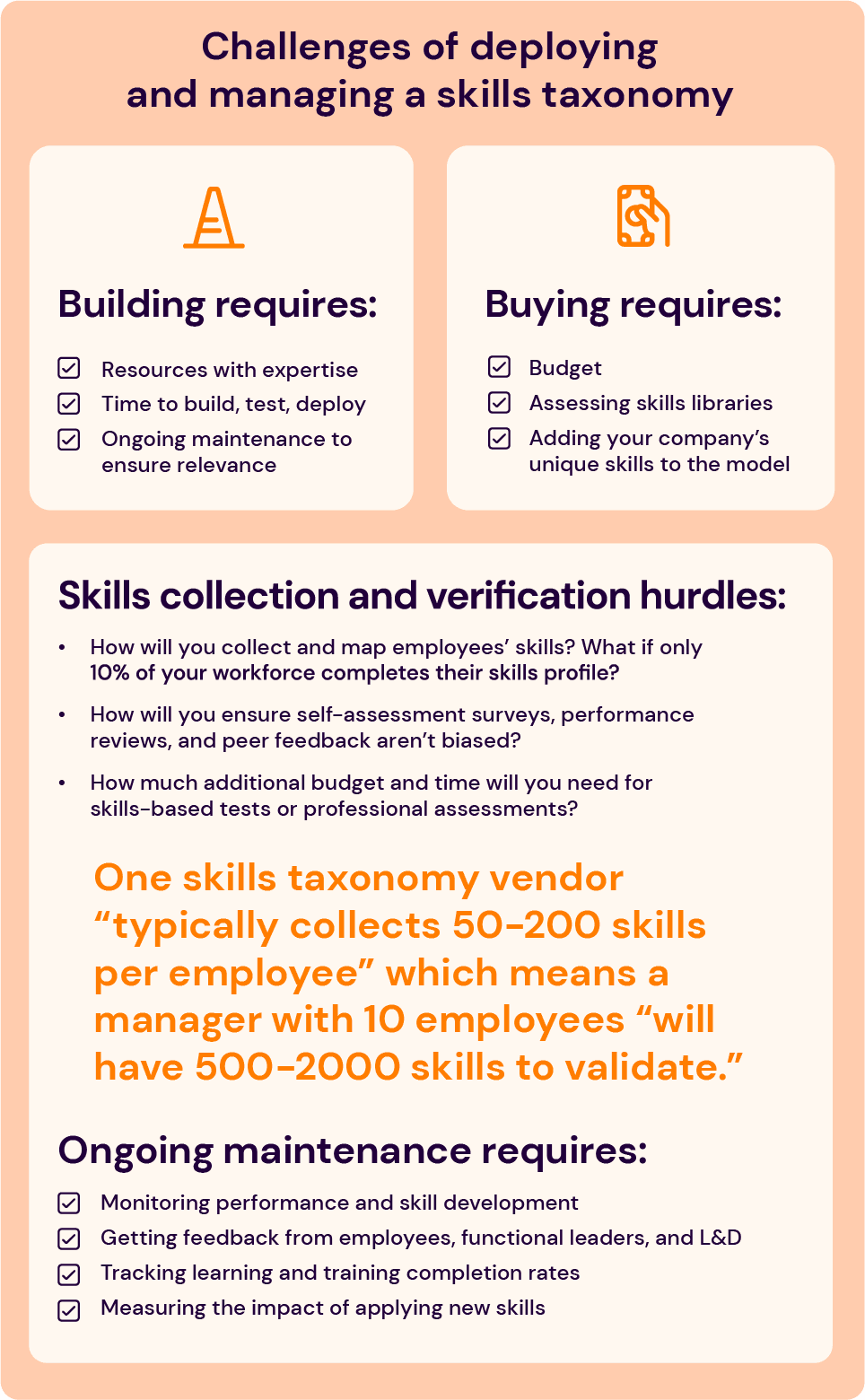
The next big hurdle is to update your job architecture with required skills, potentially mapping tens of thousands of skills to thousands of job profiles. What adds to the complexity is that most companies have a very messy job architecture, inevitably requiring cleanup. Whether it’s done with internal experts or external consultants, it is an effort that typically takes 12-18 months.
Once you have the skills taxonomy and job architecture updated, it’s time to evaluate employees’ skills against this framework. Asking employees may not be enough—you may want feedback from managers or peers to validate these skills. It’s a lot of organizational effort for a potentially incomplete picture of your people’s skills.
If you don’t have the learning content you need to address any skills gaps you’ve identified, there is more work ahead (potentially years) to create or integrate it. Finally, after all this work is in place, you can start to address talent problems with a skills-centric approach.
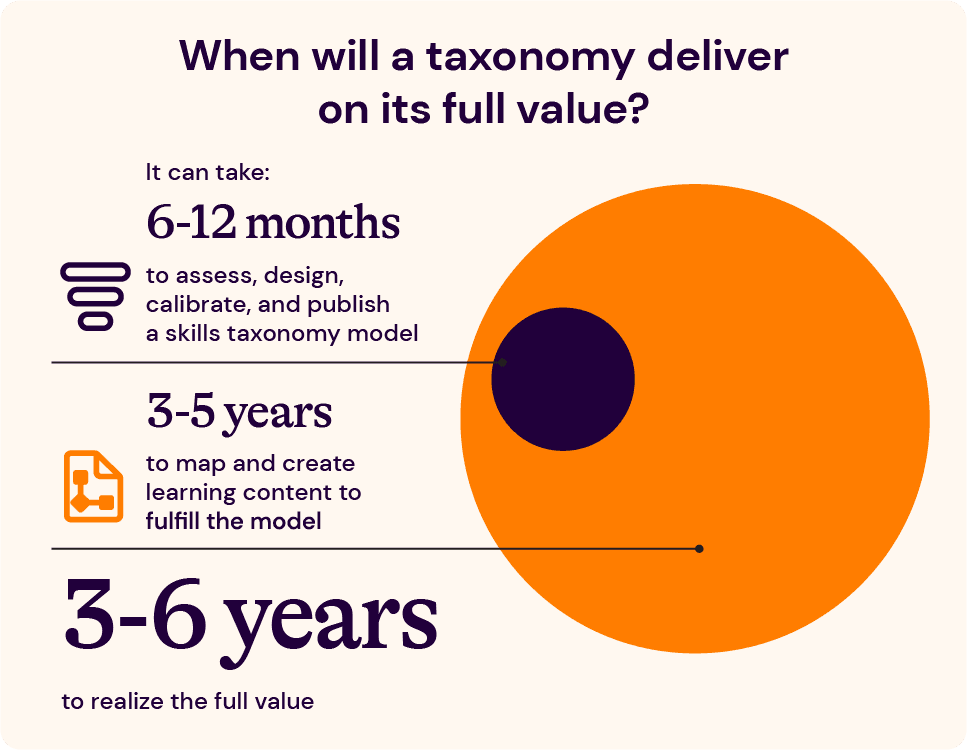
Source: Chief Learning Officer
What we’ve found through many conversations with customers and industry analysts is that organizations can be so absorbed by all this “foundational” work that they aren’t super clear on which problems they’re trying to solve. Months or even years can go by without moving the needle on your talent problems—and you’ve invested a ton of money and resources in a solution whose skills data is constantly at risk of becoming irrelevant.

“The amount of effort it takes to build and maintain taxonomy updates is wasteful because, as soon as the model is built, the skills and technologies have already changed. SeekOut’s AI tracks all our employees’ skills and allows them to update in real time.” —Cari Bohley, VP of Talent Management, Peraton
How can AI and a dynamic skills system help create impact faster?
You shouldn’t have to spend a lot of time and manual effort trying to get the perfect skills taxonomy built or mapping skills to every job role in your company. The right AI-assisted technology can make your journey a lot simpler and help you create impact by focusing on solving specific talent problems with skills.
Today, generative AI enables a dynamic skills system that:
Unifies huge amounts of disparate talent data across internal and external sources like HRIS, ATS, LMS, performance and productivity tools, social platforms, and more.
Understands skills at the semantic level, gleaning additional information and useful context.
Automatically enrich and update skills information on an ongoing basis to help maintain relevance.
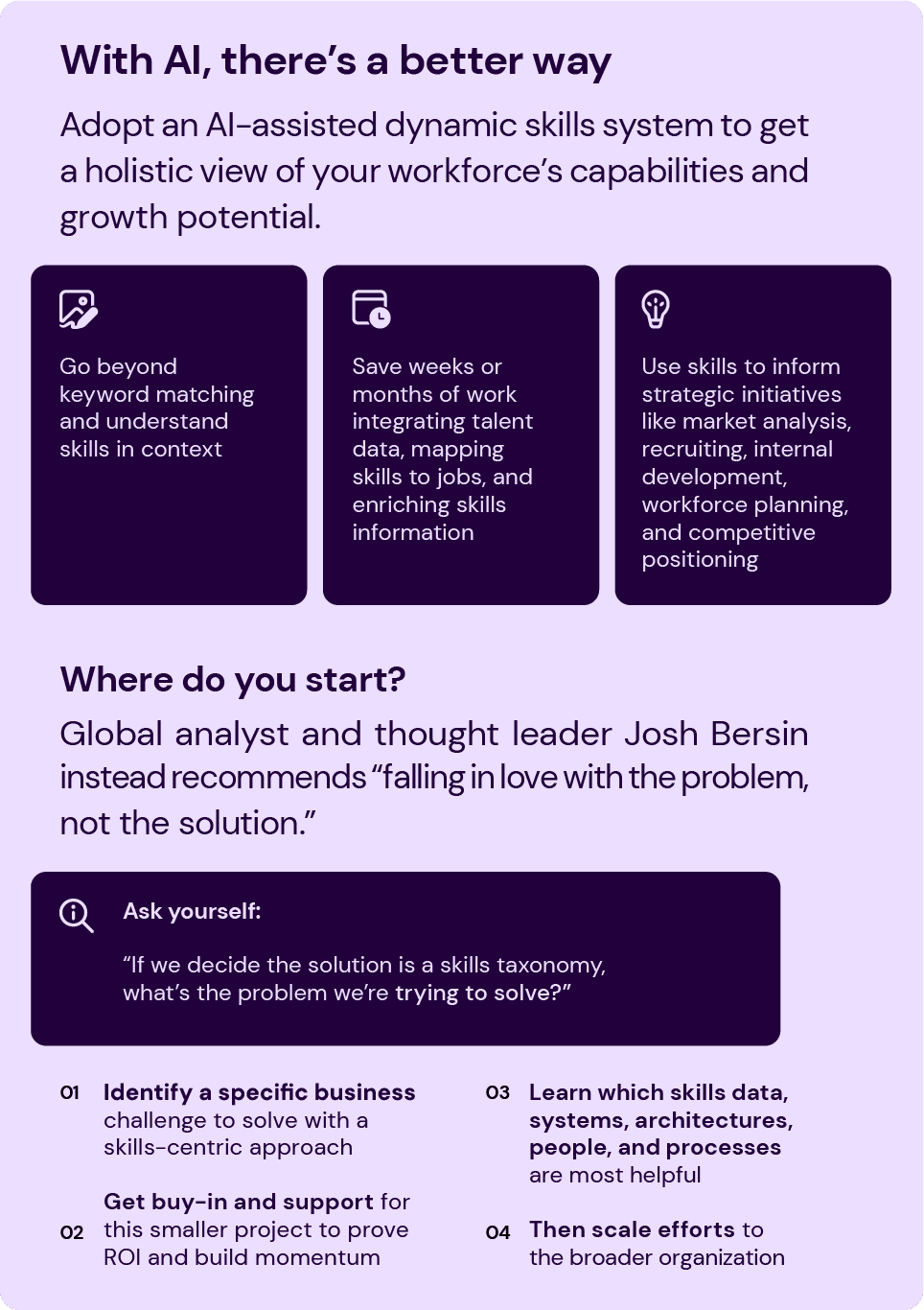
Instead of investing in a skills taxonomy, mapping skills to jobs, and getting caught up in the “foundational” work to understand skills, you can flip this approach upside down. Begin by identifying the talent problems you want to solve—global analyst and thought leader Josh Bersin calls this “falling in love with the problem.”
Read more guidance from our skills-based workshop with Josh Bersin →
Rather than building out a skills taxonomy and mapping skills to jobs for your entire organization, get crystal clear about a specific business challenge that you want to use a skills-centric approach to solve. Tackling a specific area through a smaller project, you can learn which skills data, systems, architectures, and processes are most helpful before scaling efforts across the business.
This will help you get out of the grunt work of skills, see and prove ROI faster, and create momentum with skills that can help with broader adoption.
How do you start your skills journey on the right foot?
Effective places to start with a skills-based project include:
Skills-based hiring: If you’re struggling to fill roles with specific skills that are competitive or in short supply, sourcing candidates with adjacent skills can help to expand your talent pool.
Redeployment or upskilling: Identifying transferable skills you already have within your organization can help address a skills gap without relying entirely on hiring.
Employee career development: Enabling your workforce with self-service growth opportunities can be effective for both personal growth and retaining talent and skills within your organization.
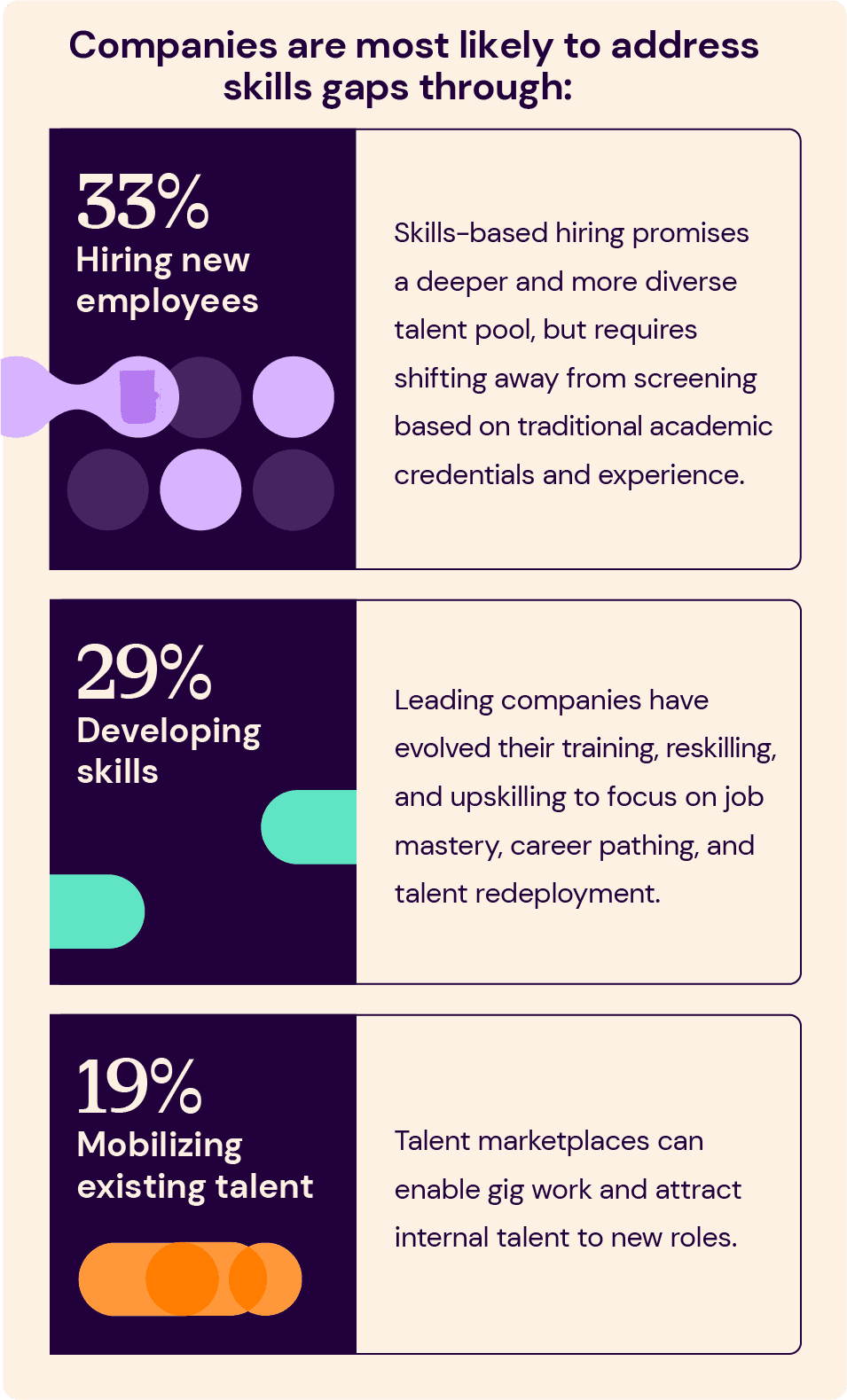
Source: Forrester
Ready to begin your skills journey?
Let’s recap what we’ve learned with a couple key takeaways:
Don’t spend the time and resources to manually identify and categorize the tens of thousands of skills you have and need in your organization. Instead, use AI-enabled, dynamic technologies to automate foundational tasks related to understanding skills.
Start your skills journey by addressing a specific business challenge through a targeted initiative, such as skill-based hiring for talent shortages, upskilling or redeployment to address skills gaps, or offering career development to improve employee engagement and retention.
Download the full infographic to learn more.
Need some direction to get started? We've got your back with additional resources to help you confidently kick off your skills-based journey:
Read the Future of Skills whitepaper to learn more about how organizations are investing in skills, and where you can get started to drive impact.
Check out this interactive worksheet—in a few easy steps, you can identify a talent problem for a skills project and discover your next actions with key stakeholders.
See us in action
Learn how SeekOut unifies people data to help organizations reach their talent goals
Request a demo